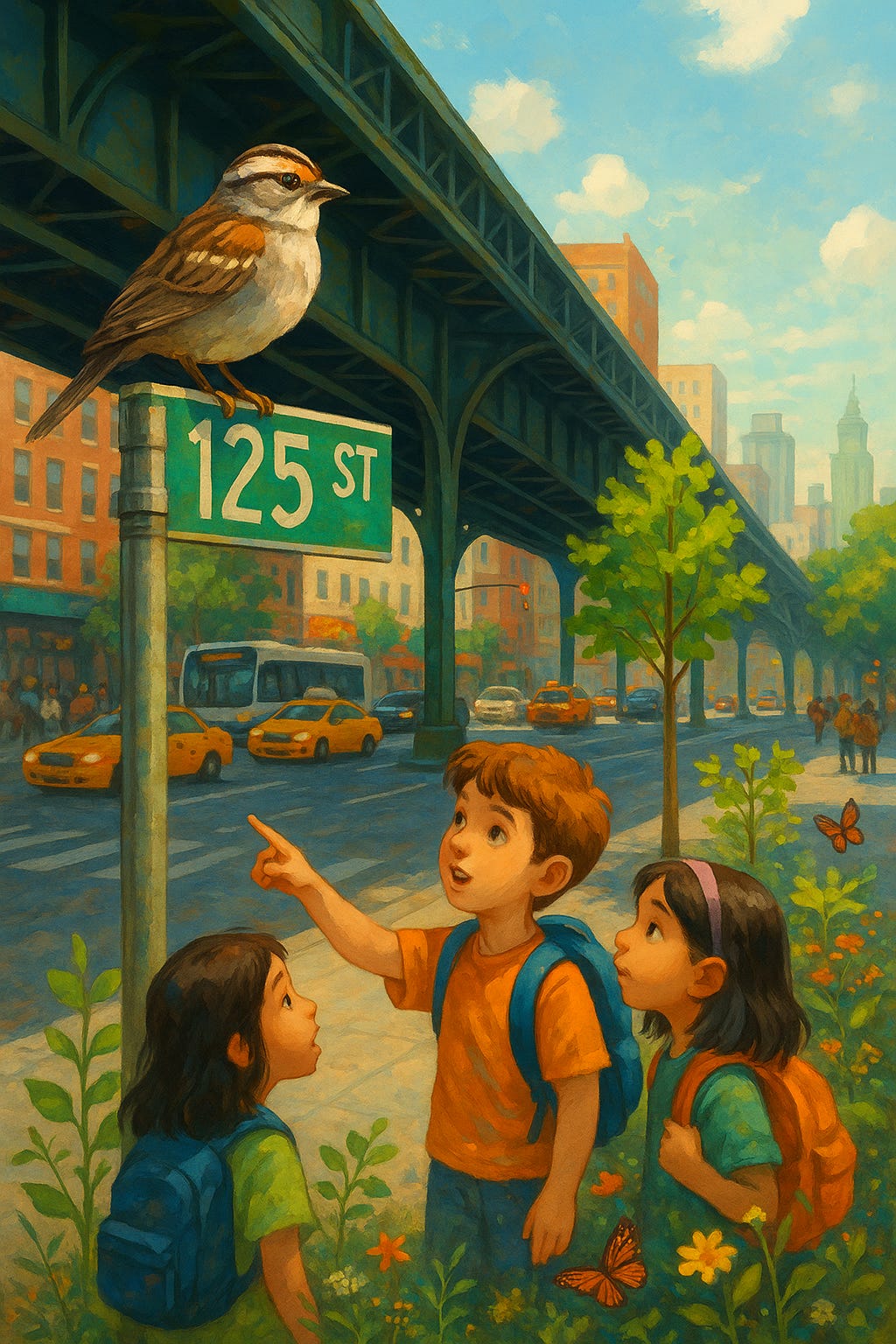Seeing the City with Tree-Eyes
City birds and sidewalk forests
Stepping out of our hotel in New York City onto a crowded 125th Street here in Harlem with the kids this morning, the first sound that rose above the car horns and bus engines was the clear whistle of a white-throated sparrow echoing off the steel girders. Ben looked at me wide-eyed and said, “I thought birds didn’t like big cities.” Right then Central Park’s hidden canopy, the Hudson’s briny breeze, and the tiny jungles sprouting in sidewalk cracks came together as a quiet reminder: urban life is still ecological life, if we take time to notice.
All week, Washington, D.C. and now NYC keeps revealing layered habitats that play such an important part of the wider ecology… pigeons gleaning crumbs alongside house sparrows, oaks shading playground asphalt, pollinator gardens tucked between brownstones, and oysters quietly filtering harbor water beneath ferry wakes. These sights echo what we have been learning back home in the Carolinas: ecology is not reserved for “pristine” forests or remote swamps. It is an ongoing conversation wherever living things meet. The density of a place simply changes the dialect.
Next week, when we settle back into Piedmont rhythms, I plan to keep New York in my field notes. Urban ecology is not a consolation prize for those of us far from old-growth forests. It is an invitation to witness process, constant becoming in process thought, in spaces we once assumed were finished. Oysters stitching harbors, butterflies working median wildflowers, children redrawing their mental maps of “nature” all remind us that integral ecology is about relationships, not scenery.
Here is a simple practice I am bringing home: each time we step onto a sidewalk, we pause, listen for the nearest bird, trace the nearest leaf, count the pollinators, and remember that every city block already links the Atlantic Flyway, the Catawba watershed, and the walnut standing in our Spartanburg backyard.
If we learn to notice that conversation, maybe our children will never wonder whether birds belong in cities. They will know, as surely as any sparrow, that cities are nests too.



